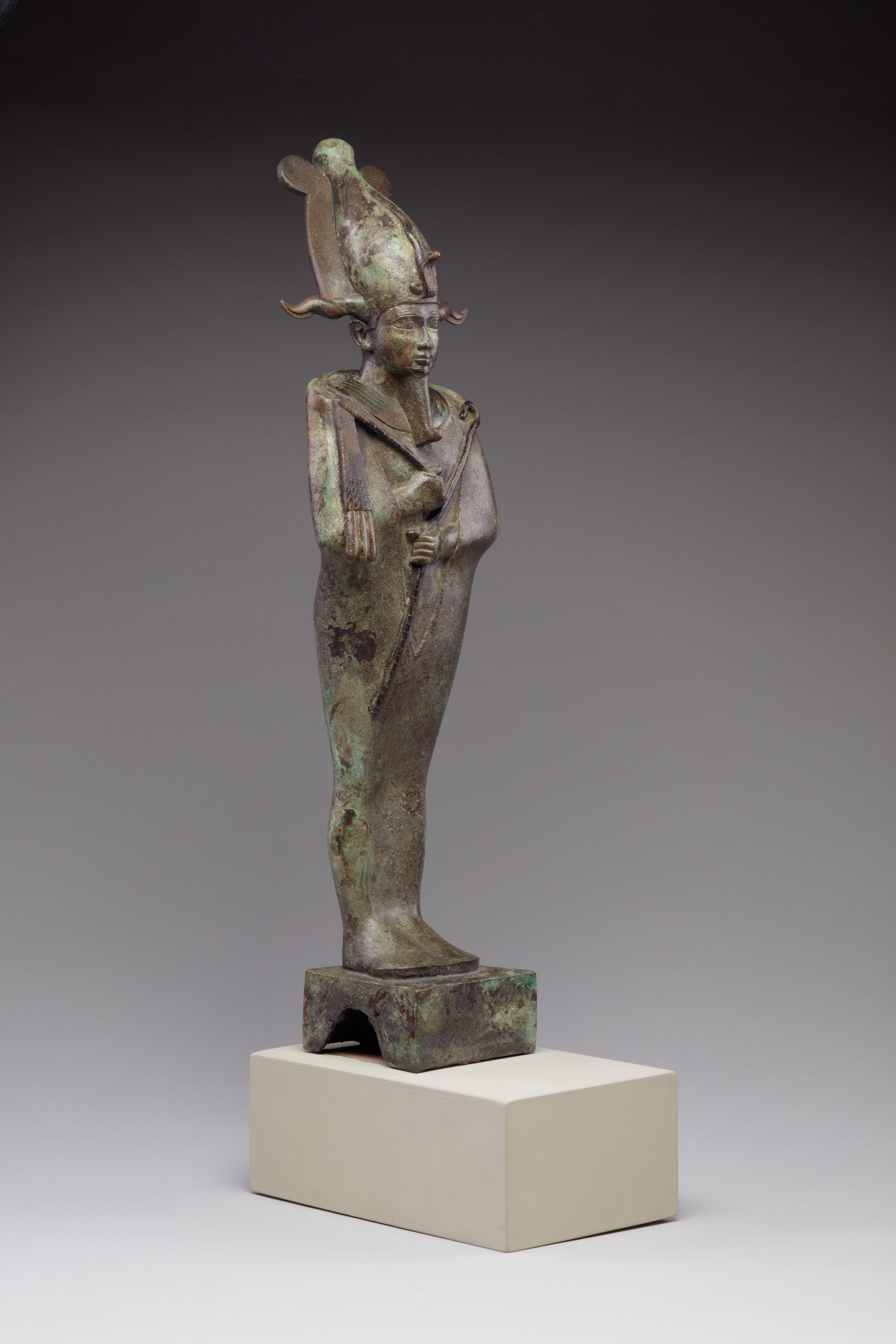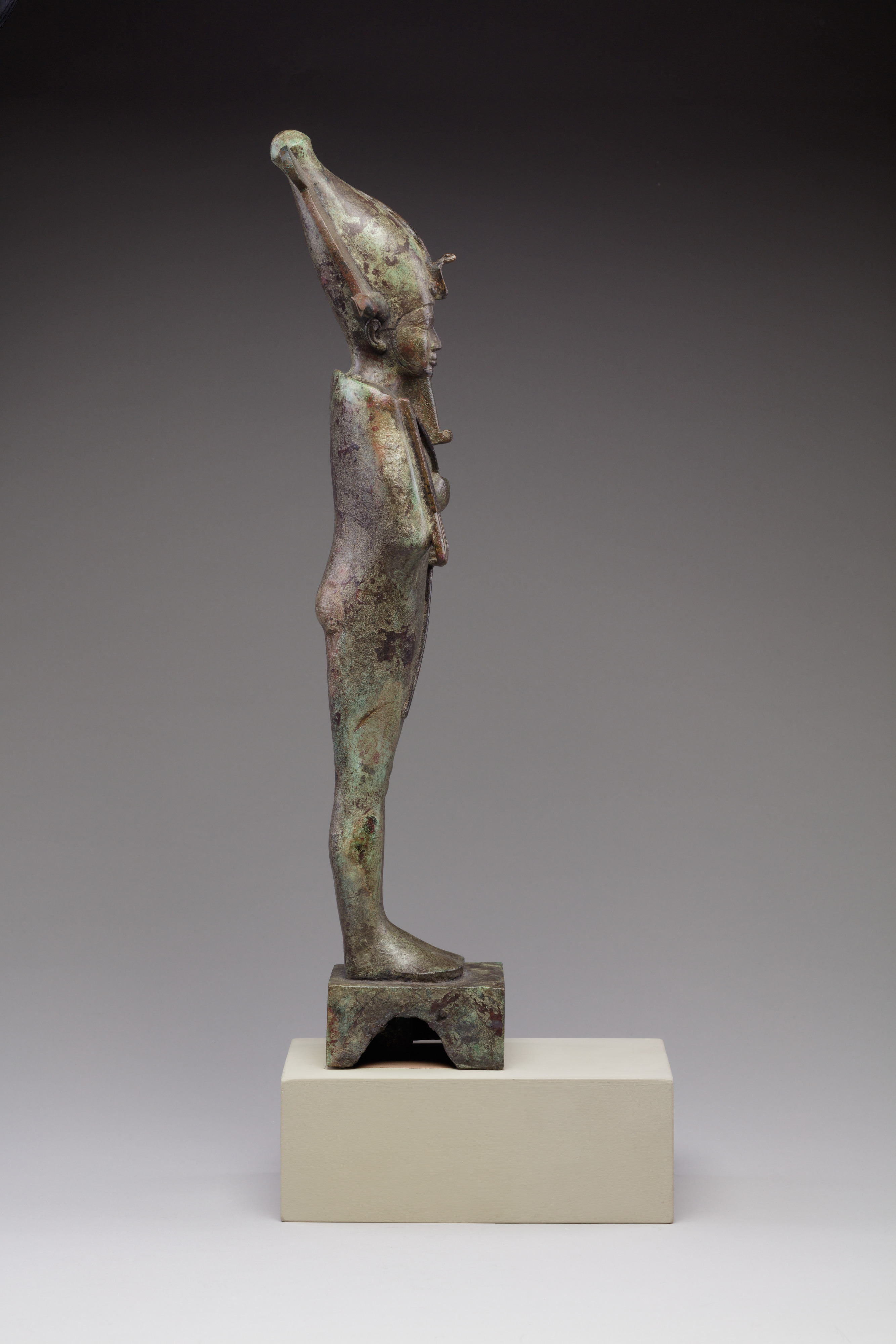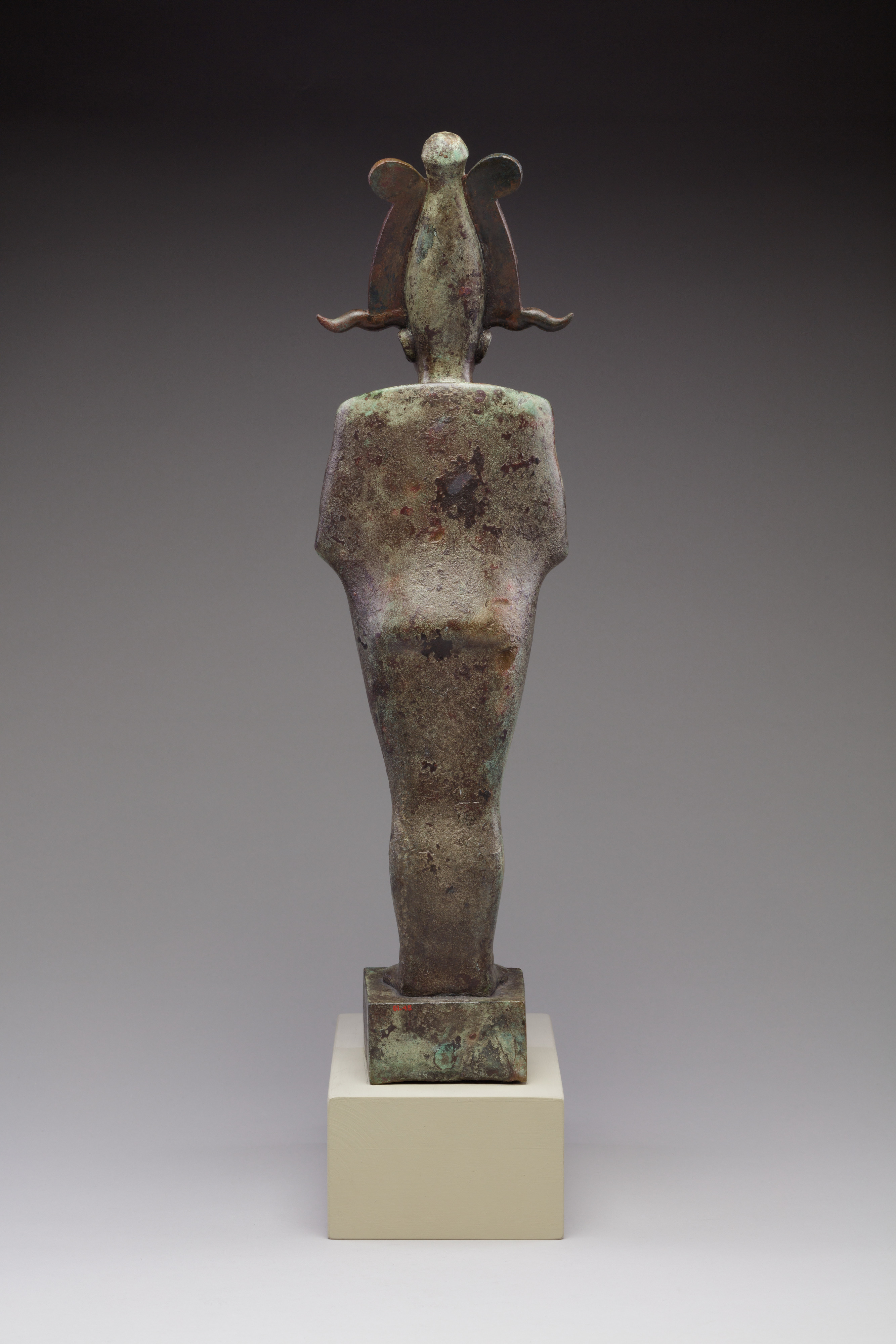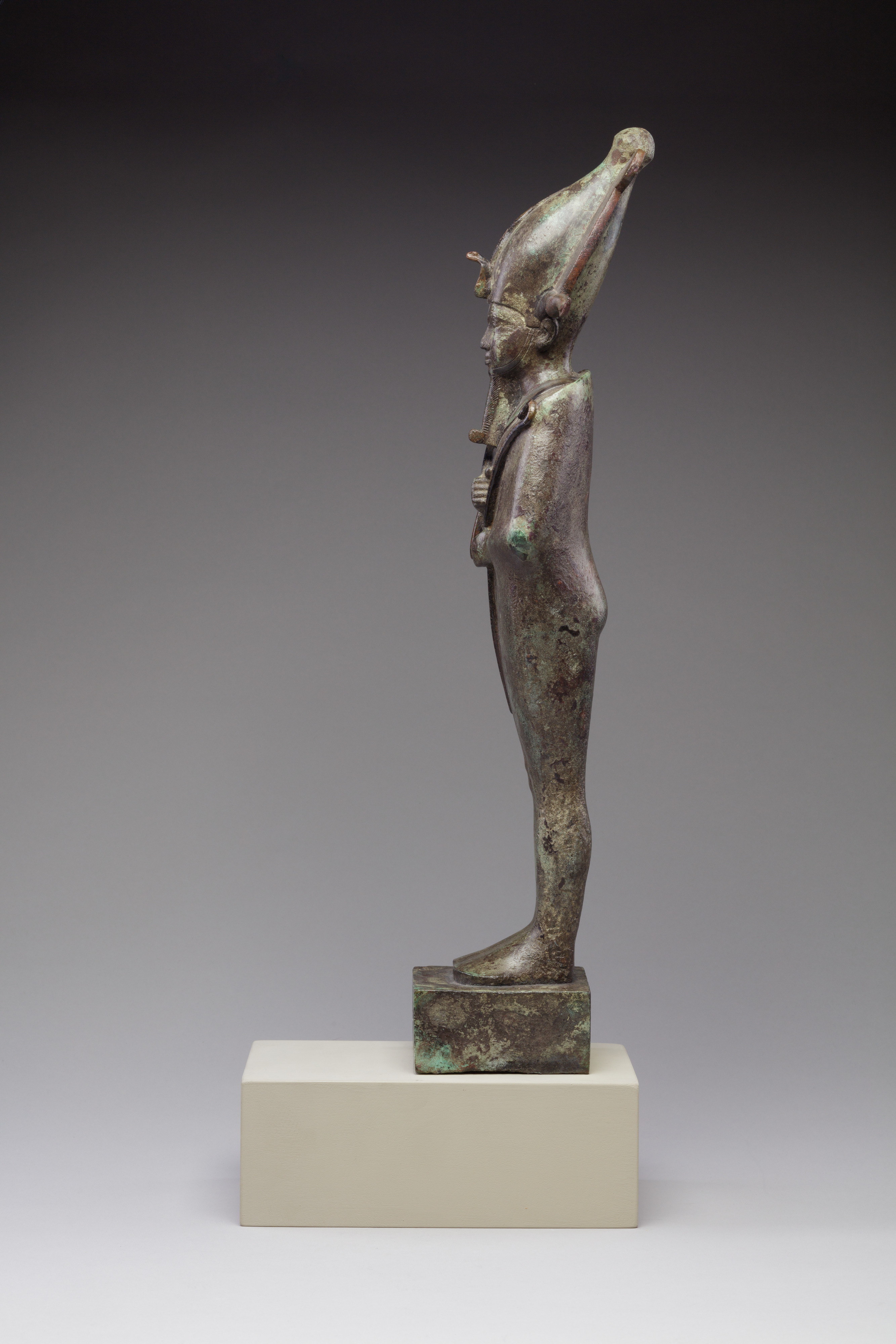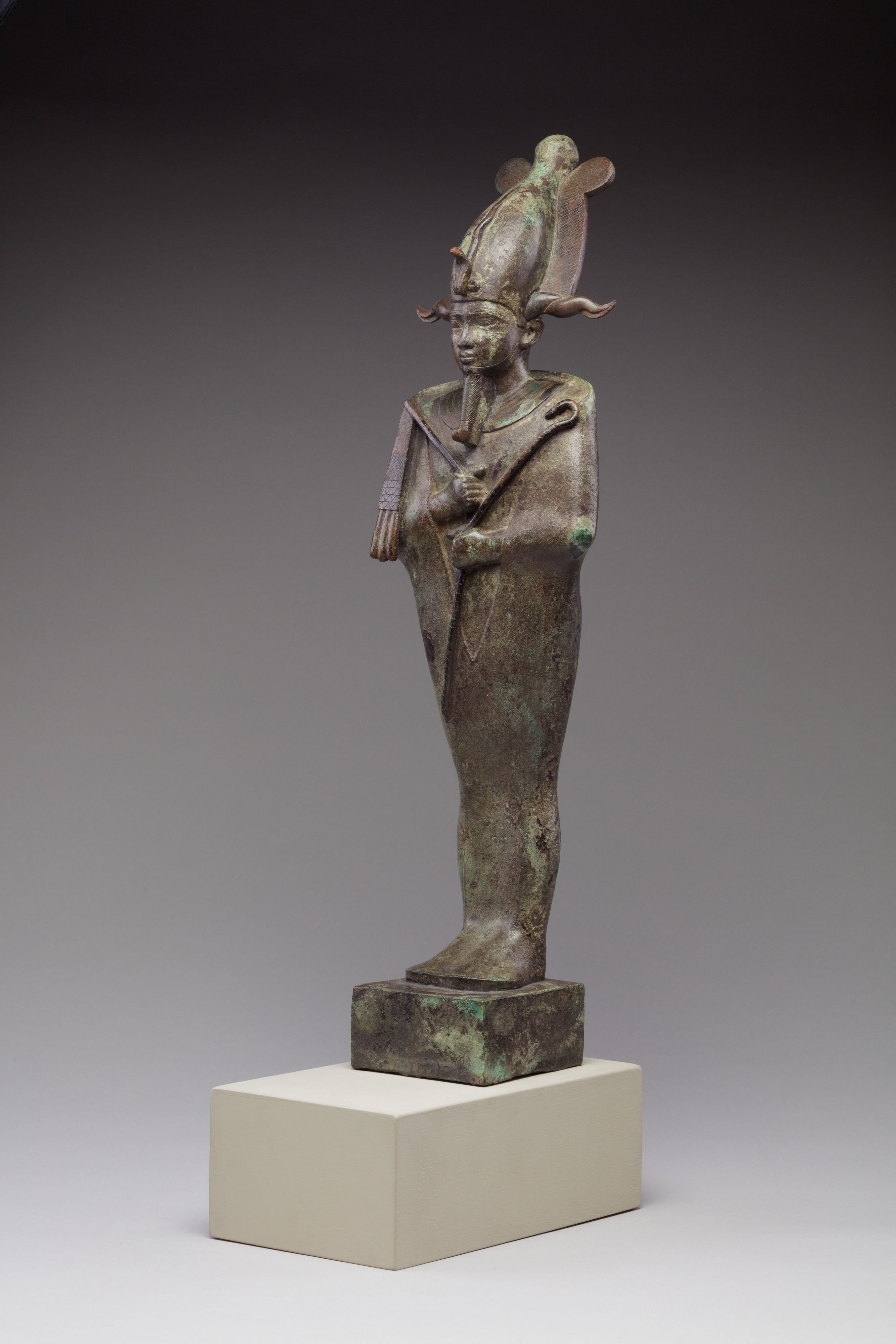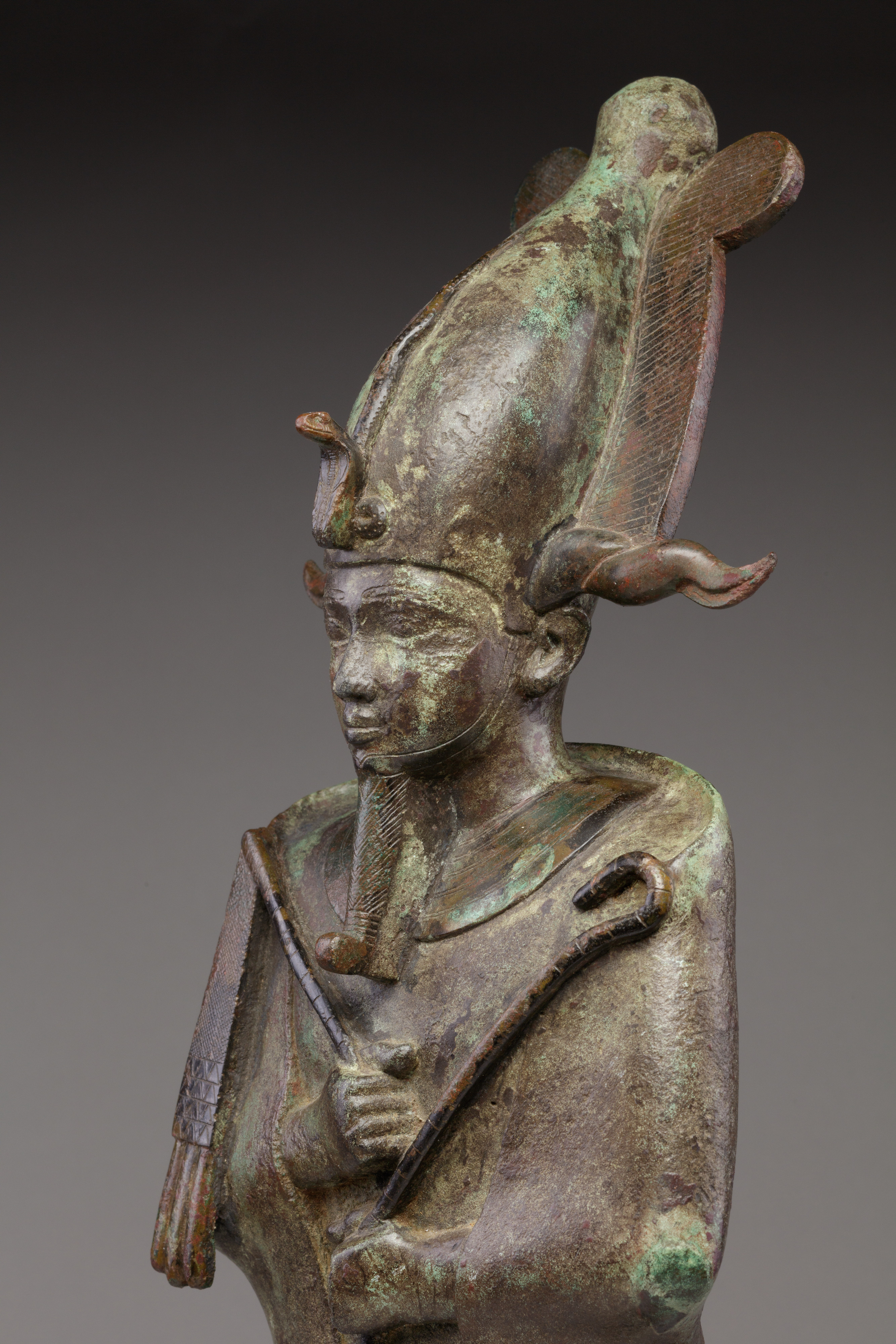Statuette of Osiris
Late Period
Osiris is most often represented as a shrouded mummy, emphasizing his connection with the dead. He holds a flail and a short shepherd’s crook, insignia associated with Egyptian kingship, and wears a long, braided beard, emblematic of divinity. On the front of his tall crown is a uraeus, a cobra ready to spit fire at his enemies. The horns may link him with the sun god, who often appears as a ram-headed man at the end of the day and during the night.
By the first millennium B.C., statues and statuettes of Osiris were offered in profusion, reflecting both the importance of the god and a shift in how the ancient Egyptians performed certain rituals. Some of the places where statues of Osiris have been found can be identified as temples and shrines belonging to him, but they have also been found as offerings in contexts where explanations are not evident. This example is unusually large, though not the largest known in bronze.
Due to rights restrictions, this image cannot be enlarged, viewed at full screen, or downloaded.
This artwork is meant to be viewed from right to left. Scroll left to view more.


